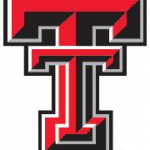 FOR IMMEDIATE RELEASE
FOR IMMEDIATE RELEASE
DATE: Jan. 16, 2015
CONTACT: George Watson, george.watson@ttu.edu
(806) 742-2136
Texas Tech Researcher Discovers New Salmonella Serotype
Salmonella Lubbock will provide new avenues for research into the bacteria’s prevention.
Lubbock is known for many things. Some of them are reasons to celebrate, like being the home of Buddy Holly. Some portray the city in negative ways, like dust storms.
The latest honor to come Lubbock’s way may not sound good at first, but when realizing it’s a breakthrough in biological sciences, it will become something to brag about.
Marie Bugarel, a research assistant professor at Texas Tech University’s Department of Animal and Food Sciences in the College of Agricultural Sciences and Natural Resources, has discovered a new serotype of the salmonella bacteria. The new serotype was confirmed by the Pasteur Institute in Paris, the international reference center for salmonella.
Because convention calls for a new serotype to be named after the city in which it is discovered, this one will be called Salmonella Lubbock (officially Salmonella enterica subsp. enterica Lubbock).
“More important than the name, however, is that this discovery illustrates there is more that needs to be discovered about salmonella and how it interacts with cattle populations,” said Guy Loneragan, a professor of food safety and public health who, along with Kendra Nightingale, are Bugarel’s mentors at Texas Tech. “With this understanding will come awareness of how to intervene to break the ecological cycle and reduce salmonella in animals and in beef, pork and chicken products.”
Bugarel, who came to Texas Tech with an extensive background in salmonella research, has worked on developing new tools to detect salmonella, new approaches to distinguish serotypes and ways to understand salmonella’s biology.
Her work has led to a patent application that has been licensed to a high-tech biosciences research company. Her invention means it is now possible to simultaneously detect and distinguish specific strains of salmonella by targeting a specific combination of DNA. That will allow for early detection in food while also identifying whether or belongs to a highly pathogenic strain.
In her research for Salmonella Lubbock, the impetus was to reduce salmonella in food and improve public health. She focused on providing solutions to control salmonella in cattle population, which led to a better understanding of the biological makeup of salmonella itself, including its genetic makeup. Through this approach, Bugarel discovered the new strain never before described.
The long-held standard way of distinguishing one strain of salmonella from another is called serotyping and is based on the molecules on the surface of the bacterium. Each serotype has its own pattern of molecules, called antigens, and the collection of molecules provides a unique molecular appearance. These antigens interact with certain antibodies found in specifically prepared serum, thus providing the serotype. It is similar to how blood typing is performed.
“This discovery reinforces my feeling that the microbiological flora present in cattle in the United States harbors a singularity, which is an additional justification of the research we are doing in the International Center for Food Industry Excellence (ICFIE) laboratories at Texas Tech,” Bugarel said. “Additional research will be performed to better describe the characteristics of this atypical bacterial flora and, more specifically, of the Lubbock serotype.”
With this discovery, Loneragan believes between 20 and 30 percent of two current strains, Salmonella Montevideo and Salmonella Mbandaka, will be reclassified as Salmonella Lubbock. The algorithm used in serotyping has some stopping points, but Bugarel discovered a need to go a step further to get the correct strain name. Therefore some of those strains called Montevideo and Mbandaka are now Salmonella Lubbock.
Some of the strains of Salmonella Lubbock fall into the category of serotype patterns that are more broadly resistant to many families of antibiotics, furthering the need for more research on the subject. Human susceptibility to the Lubbock strains remains unknown.
“We will continue to develop methods to detect, identify and control the presence of pathogenic microorganisms in food products in order to improve food safety and public health,” Bugarel said.
“Kendra and I have been honored to serve as Marie’s mentors,” Loneragan said. “But now, the growth in Marie’s expertise means that she is becoming the mentor to us. Many students, and the citizens of the United States in general and Texas in particular, are benefitting from her commitment to research excellence at Texas Tech. We are very lucky to have her.”
Find Texas Tech news, experts and story ideas at Texas Tech Today Media Resources or follow us on Twitter.
CONTACT: Guy Loneragan, professor of food safety and public health, Department of Animal and Food Sciences, College of Agricultural Sciences and Natural Resources, Texas Tech University, (806) 834-1291 or guy.loneragan@ttu.edu.




